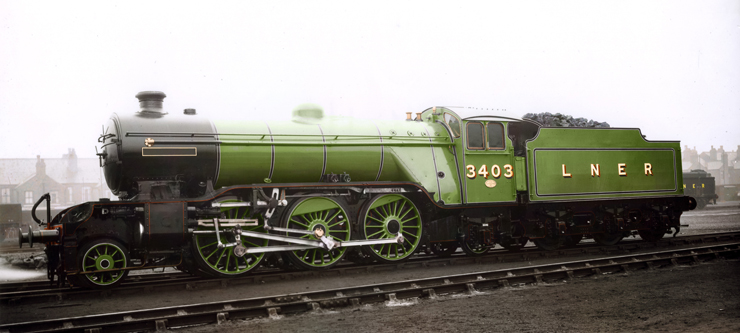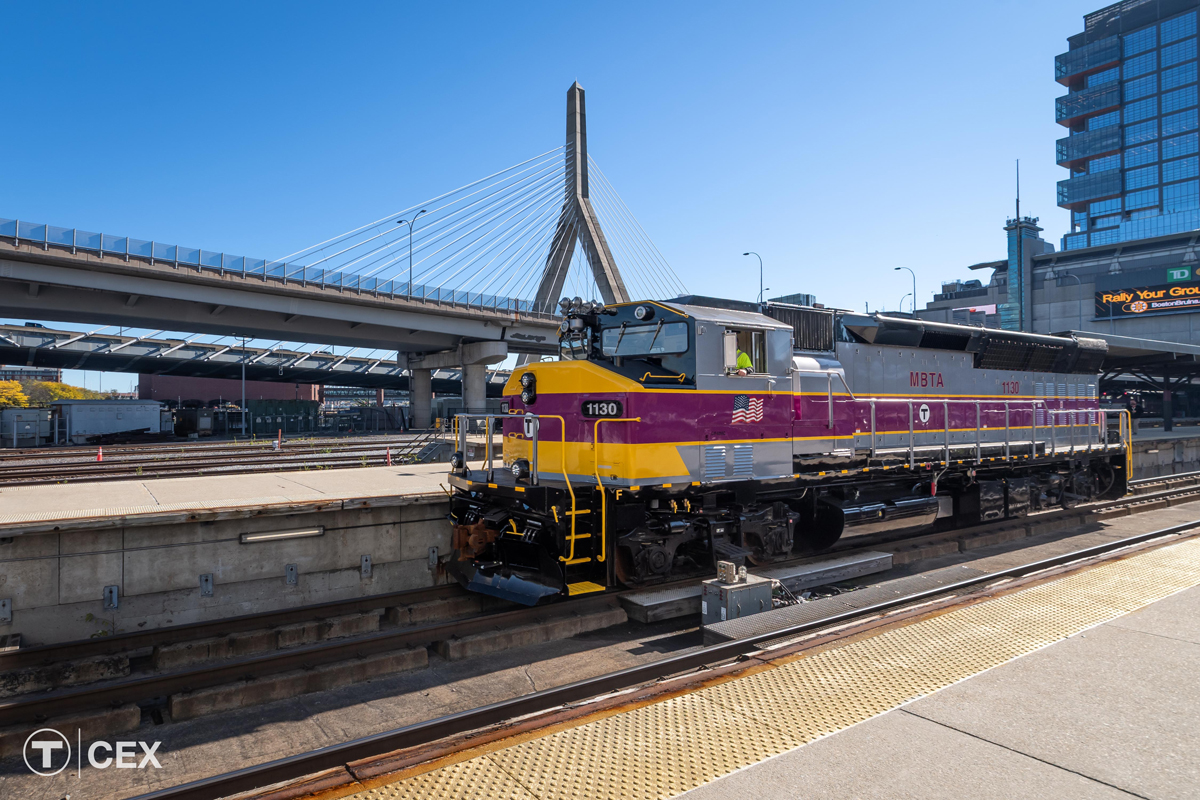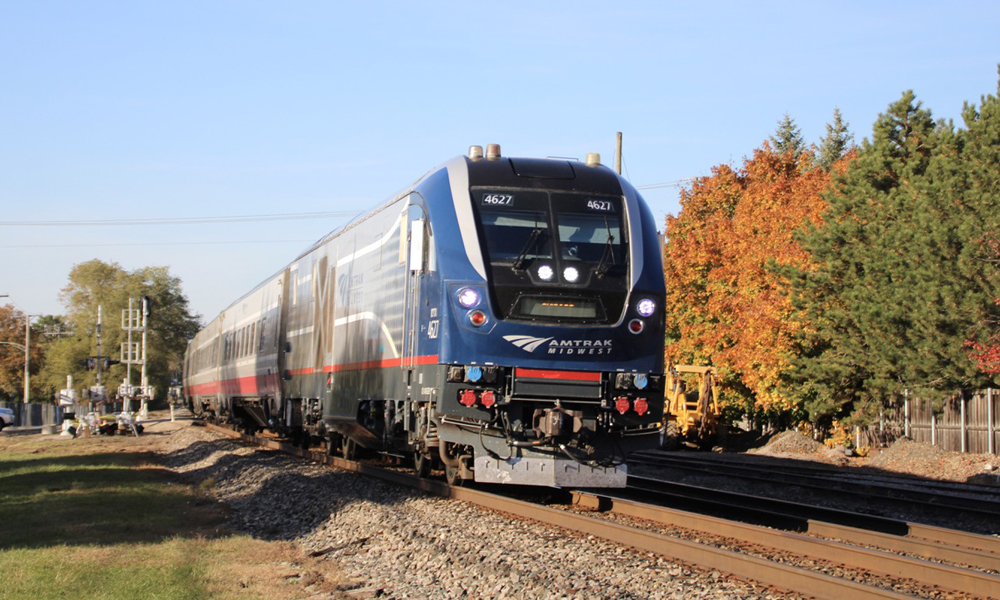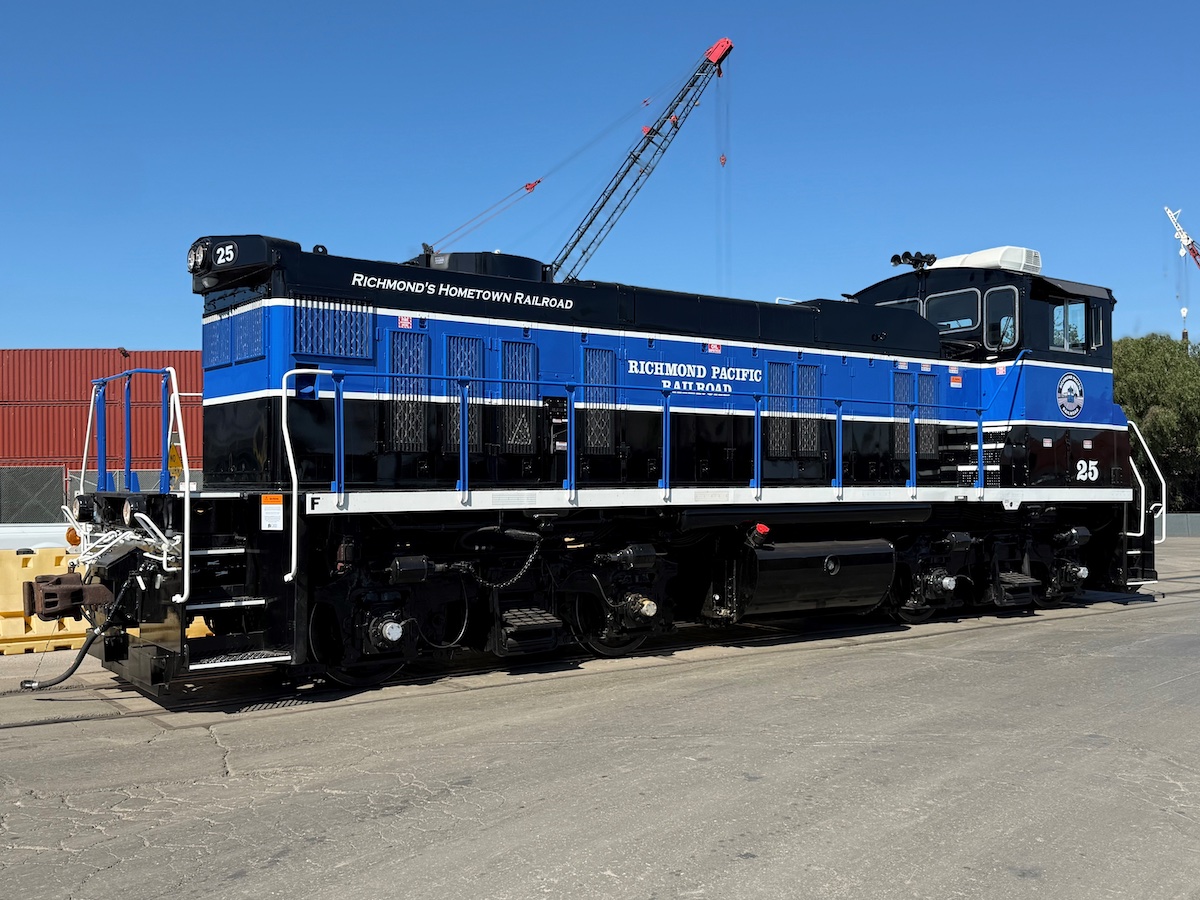DARLINGTON, England — The Brits are at it again.
The British group behind the Tornado — the first main line steam locomotive built in the United Kingdom since the end of steam — announced this week that they were officially forming a subsidiary to build its third brand new steam locomotive: a Gresley class V4 2-6-2 locomotive.
In 2008, the A1 Steam Locomotive Trust completed locomotive No. 60163, a recreation of the long-lost London and North Eastern Railway Peppercorn Class A1 4-6-2. Since it hit the rails, the locomotive has lead excursions across the United Kingdom and even became the first steam locomotive to reach 100 miles per hour on British rails. In 2010, the group began work on its second steam locomotive, a P2 class 2-8-2 No. 2007 called the Prince of Wales, at its Darlington Locomotive Works.
In 2015, the group announced an even more ambitious goal: to construct three more extinct LNER steam locomotives once the Prince of Wales is complete, including a Gresley class V4 2-6-2, a Gresley class V3 2-6-2T and a Gresley class K3 2-6-0. All three locomotives were designed by Sir Nigel Gresley, the famous LNER chief mechanical engineer who designed the Flying Scotsman.
Last year, the group began to scan original drawings for the V4 2-6-2 at the National Railway Museum in York. In January it purchased a set of locomotive tires that had been constructed in the 1990s for a group that previously tried to build a new V4. Darlington Locomotive Works officials say the formation of the subsidiary is the first major step to starting construction as early as 2021. The locomotive is expected to cost 3 million pounds (or $3.8 million) and take up to five years.
The V4s were built for freight and passenger and was Gresley’s last design for the LNER before he died in 1941.
“We want to be ready to start assembling our new Gresley class V4 as soon as our new class P2 is completed,” says A1 Steam Locomotive Trustee Mark Allatt. “Our new Gresley class V4 is an ideal locomotive for regional main line tours… and the longer, main line connected heritage railways.”
For additional information visit www.a1steam.com.















C&TS bridges might well be able to carry a 2-6-6-2. The issue is wheel loading-a 2-8-2 has a higher axel loading than a 2-6-6-2. That said, wheel base would be an issue. However, a Garrett would probably fit the sharp curves.
The Brits are fortunate in that they have an open national rail network. The network is essentially a public highway on which anyone who meets the qualifications to run can do so. Of course, the reason for the proving run that netted the 100 mph record is that in the future, excursion operators will be required to demonstrate that their locomotives can haul their trains at a proposed minimum speed-80 or 90 mph to prevent delays to regularly scheduled services.
Yeah, ever hear of the City of Truro which did it in about 1904?
“the locomotive ……… even became the first steam locomotive to reach 100 miles per hour on British rails”
Ever heard of Mallard?
One thing I have noticed whilst visiting heritage sites in the USA is the almost complete lack of volunteers. I regularly read in this magazine about all the paid staff on these sites, head of corporate communications, interpretive services etc. Something that the UK heritage organisations simply cannot afford bar the essential few. Most work is volunteer run including functions such as signaling and trackwork which can be viewed as safety critical . There are plenty more new builds in the pipeline. Most of these teams are volunteers. I count myself as a typical heritage railway volunteer, desk bound midweek, and out on the track when I can, soon to be more frequent.
Maybe the difference is culture rather than funds ?
Truly wonderful to see this, the British heritage scene is so different. Part of it is because the main railway companies operate passenger services, so they have all the correct equipment and insurance (or the equivalent) plus Network Rail owns the tracks, so a steam TOC uses the, just like a regular passenger operating company. As for the C&TS 2-6-6-2 comment, I personally think that would be too heavy or long for the tight curves, where singing isn’t an option. Plus the C&TS is nice and accurate, and dole headers are an interesting spectacle for enusiasts, of which many C&TS passengers are. As for American new builds I would adore to see a NYC J1e, as impratical as that would be. Somewhere Finger Lakes Railway, or another Class III or II operator with NYC heritage, decent track, a long route, and heritage operations.
Finally, V2 4771 “Green Arrow” won’t be the loneliest 2-6-2 Prairie in the UK anymore. Good on the Brits for rising to the challenge to bring back one of Sir Nigel Gresley’s final designs for the LNER–before Edward Thompson came into the picture and mucked up the majority of the A1s and P2s into the utterly HIDEOUS A2/1s, A2/2s (rebuilt from Gresley’s six P2 Mikados), and A2/3s. Now, credit where it’s due, the A2/1s and the A2/3s were actually good performers, but the A2/2s were heavily laden with mechanical problems.
I am so glad to see new copies of steam engines being built by the British. If I had the wherewithal to do it, I would go over there and stand trackside just to see one pass by. How great that experience must be. I wish some rich patron would start an effort like that in the U.S.A. I would recommend starting small, with something like a clone of the 290 or 750 and then working up to a Hudson as experience is gained.
Would the Brits mind building us a New York Central J3 or J1 Hudson while they’re at it?
I believe you mean the first steam locomotive to go 100 miles per hour in recent times. Lets not forget the Mallard – 126 mph in 1938.
Of course, we here in the colonies so envy the Brits for their great success in restoring, building, and operating steam all over the national system, at track speeds. Those Youtube videos are thrilling, and there are lots of them. Does anyone out there know how the British steam operators and sponsors handle the giant elephant in the room here in this country, liability insurance? Even if one of the Class Ones in the US were to be agreeable to allowing one of our big steam locos on their tracks, Amtrak be damned, there would be no getting around this issue.
Good news!
I don’t think the C&T Lobato trestle could handle the weight of a 2-6-6-2. In pre-tourist days, doubleheaders had to have the 2-8-2 engines separated so that two of them were not on the bridge at the same time. Besides, I think they’re striving for historical accuracy on that line. On a different note, the rebuilt Welsh Highland Railway in Wales is using 2-foot gauge Garratt locomotives that were imported from South Africa to handle the longer passenger trains needed to be economically successful in today’s times.
Chama, NM to Osier could use a 3′ gauge ALCO 2-6-6-2 that was built for the NdeM not too many years ago. It would have a place to run and reduce the need for double header the climb to Cumbres Pass. The PRR T-1 will never have a original line to run on, nor a Hudson.
The only comparable effort in the USA that I can think of is the T1 trust. If they succeed, who knows–maybe a future NYC Hudson is possible.
George Pins,
I believe liability laws in the UK might be different than ours, that would probably be the simplest solution, to completely change the liability laws in regards to payouts and responsibility….but it won’t happen until someone has the balls to introduce such a bill in Congress.